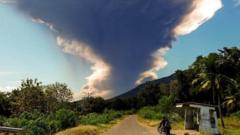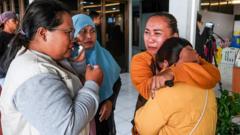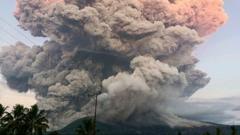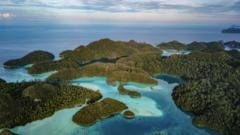On July 7, 2025, Mount Lewotobi Laki-laki in Indonesia erupted, producing a massive ash cloud that reached an unprecedented height of 11 miles, significantly surpassing the previous eruption just a month ago. According to Indonesia's national volcanic agency, the eruption occurred early Monday morning, lasting approximately six minutes, with additional eruptions recorded throughout the day.
Indonesia's Mount Lewotobi Laki-laki Erupts Again, Sending Ash 11 Miles Up

Indonesia's Mount Lewotobi Laki-laki Erupts Again, Sending Ash 11 Miles Up
A dramatic volcanic eruption in Indonesia has raised alarms as Mount Lewotobi Laki-laki belches ash 11 miles into the sky.
This latest eruption generated an ash cloud nearly four times higher than the approximately three-mile-high cloud from the previous eruption and also exceeded the over one-mile plume from a significant November eruption that resulted in tragic loss of life. Fortunately, as of late Monday afternoon, there have been no immediate reports of casualties following the most recent event.
Authorities have maintained the volcano on the highest alert level amid ongoing volcanic activity. The eruption occurred on the island of Flores, located several hundred miles east of the popular tourist destinations of Bali and Java. While this ash plume is substantial, it still pales in comparison to a catastrophic eruption in Tonga three years ago, which delivered an ash and gas column that soared to 35 miles high, well above the stratosphere.
As volcanic activity continues to be monitored, residents and travelers in the region remain vigilant.
Authorities have maintained the volcano on the highest alert level amid ongoing volcanic activity. The eruption occurred on the island of Flores, located several hundred miles east of the popular tourist destinations of Bali and Java. While this ash plume is substantial, it still pales in comparison to a catastrophic eruption in Tonga three years ago, which delivered an ash and gas column that soared to 35 miles high, well above the stratosphere.
As volcanic activity continues to be monitored, residents and travelers in the region remain vigilant.





















